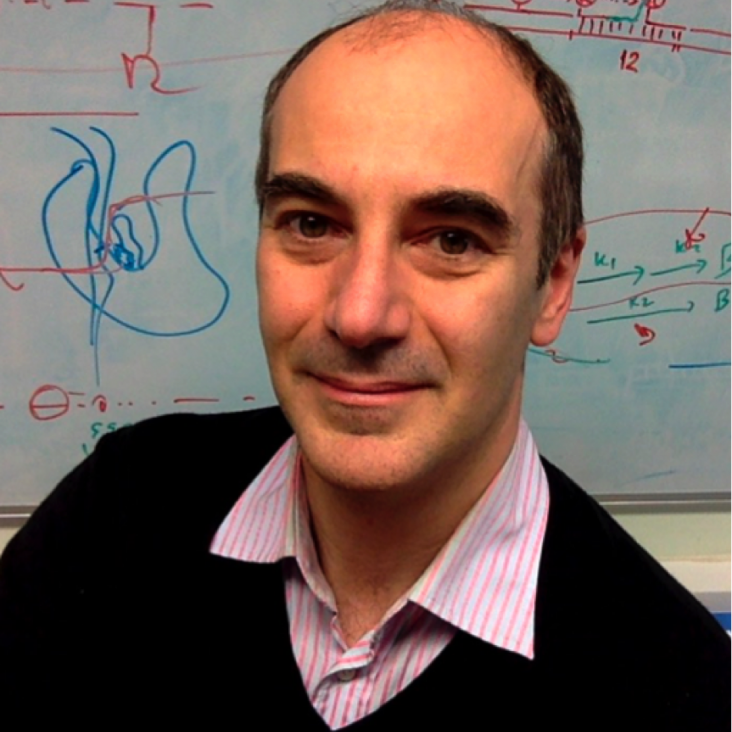Cover Picture: Improved Temporal Resolution and Linked Hidden Markov Modeling for Switchable Single‐Molecule FRET (ChemPhysChem 3/2011)
ChemPhysChem Wiley 12:3 (2011) 421-421
Improved temporal resolution and linked hidden Markov modeling for switchable single-molecule FRET.
Chemphyschem 12:3 (2011) 571-579
Abstract:
Switchable FRET is the combination of single-molecule Förster resonance energy transfer (smFRET) with photoswitching, the reversible activation and deactivation of fluorophores by light. By photoswitching, multiple donor-acceptor fluorophore pairs can be probed sequentially, thus allowing observation of multiple distances within a single immobilized molecule. Control of the photoinduced switching rates permits adjustment of the temporal resolution of switchable FRET over a wide range of timescales, thereby facilitating application to various dynamical biological systems. We show that fast total internal reflection (TIRF) microscopy can achieve measurements of two FRET pairs with 10 ms temporal resolution within less than 2 s. The concept of switchable FRET is also compatible with confocal microscopy on immobilized molecules, providing better data quality at high temporal resolution. To identify states and extract their transitions from switchable FRET time traces, we also develop linked hidden Markov modeling (HMM) of both FRET and donor-acceptor stoichiometry. Linked HMM successfully identifies transient states in the two-dimensional FRET-stoichiometry space and reconstructs their connectivity network. Improved temporal resolution and novel data analysis make switchable FRET a valuable tool in molecular and structural biology.Novel Conformational States in Mutator DNA Polymerases Observed Using Single-Molecule FRET
Biophysical Journal Elsevier 100:3 (2011) 240a-241a
Real-Time Initial Transcription by a Multisubunit RNA Polymerase
Biophysical Journal Elsevier 100:3 (2011) 65a
DAOSTORM: An algorithm for high-density super-resolution microscopy
Nature Methods 8:4 (2011) 279-280


